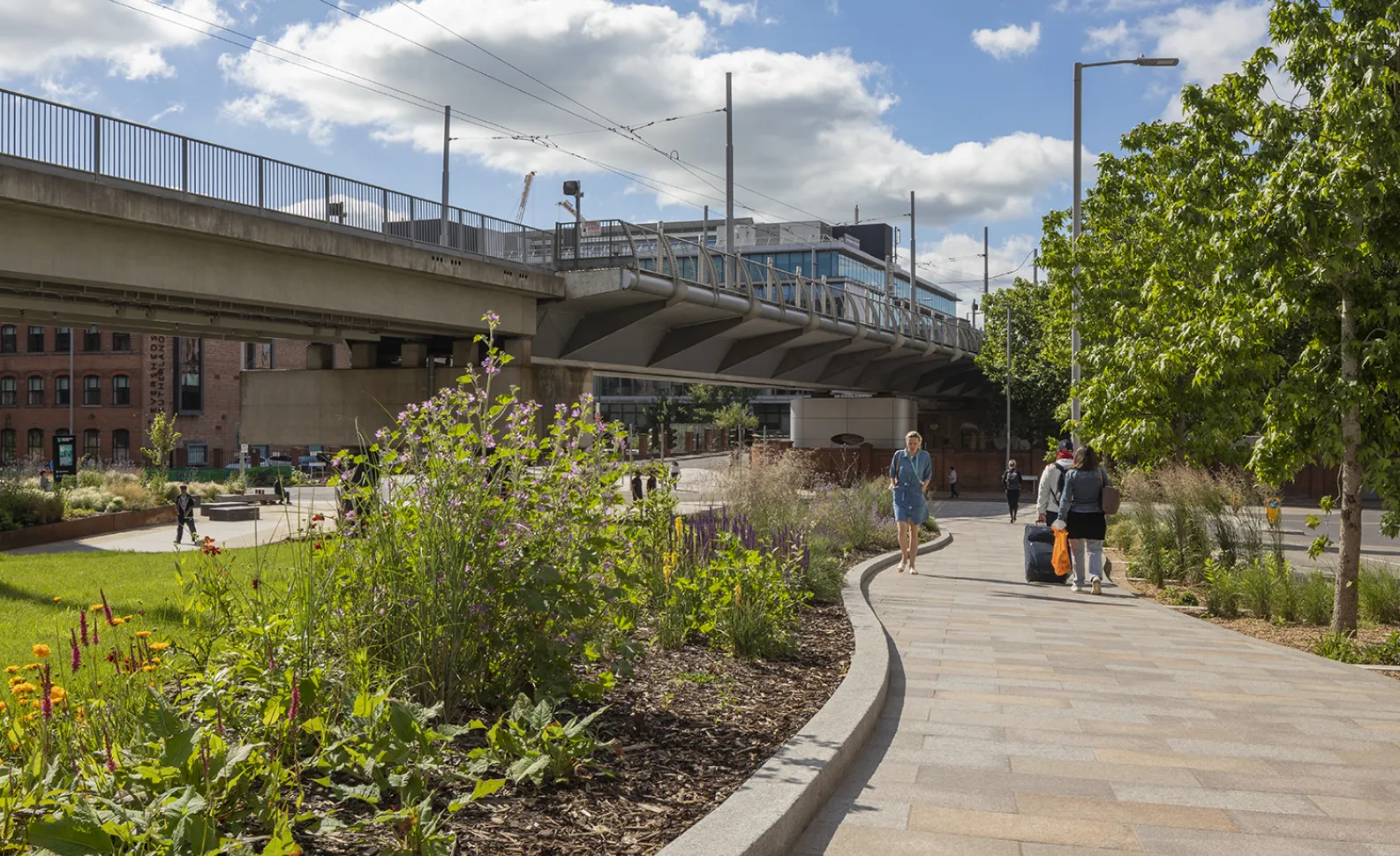Insight
Roundtable: Refurb or rebuild?
11 Sep 2025
Hosted by our architecture director, Devika Parmar and our national director, Matt Hall, our latest roundtable discussion addressed a critical question the built environment faces: should we refurbish or rebuild?
Today, decisions must align with environmental targets, government policy, and societal expectations. The discussion aimed to share perspectives, challenge assumptions, and explore how our industry can make better-informed choices that deliver long-term benefits.
Shaping the public estate
For the UK’s public estate, the balance between refurbishment and new build is guided increasingly by sustainability, cost-effectiveness, and strategic service delivery goals.
The Government Property Strategy 2022–2030 sets the tone, with its ambition to deliver “a smaller, better, and greener estate.”
This is already reflected in practice. In London, 86% of new office schemes were refurbishments, influenced by updated planning guidance that prioritises retention and reuse over demolition and rebuild.
However, while national policy and planning guidance sets the direction, the round table attendees highlighted that the reality on the ground is often more complex.
Expectations vs reality
One challenge discussed was the gap between local authority aspirations and the funding available. The ambition to transform older buildings into high-performing, future-proof spaces often clashes with funding constraints.
Attendees agreed that by working closely with clients, it is possible to map priorities, understand financial realities, and make decisions on where investment will have the most meaningful impact.
However, participants also highlighted the need for greater incentives for decarbonisation. For example, when schools are transferred to trusts, local authorities may not see the financial benefits of reducing carbon. This lack of direct return can slow down investment in sustainable solutions.
Ultimately, there is a cultural shift needed in how we approach public assets, encouraging open conversations about what is feasible, what can be delivered, and what truly supports long-term service delivery.
Learning from success
Projects like Broad Marsh demonstrate how a clear vision can be matched with viable delivery. Just one year after completion, the site is already being enjoyed by local communities and contributing to the wider city ecosystem.
Such projects underline the importance of aligning aspirations with practical delivery strategies, ensuring spaces work both in the short and long term.
Supporting the local supply chain
The round table also explored the importance of supporting local supply chains when making refurbishment or rebuild decisions.
By considering community benefits, local employment, and inclusive design, projects can bring real value beyond the built asset itself. Investing in local talent means money flows back into the regional economy, and regeneration areas benefit more directly.
Local contractors, consultants and suppliers often bring practical, place-based knowledge, understanding the area, the community, and what is achievable on the ground.
Some framework tenders are already requesting firms with a local presence to be involved in project delivery, reinforcing the idea that social value goes beyond financial outcomes.
The discussion also touched on the speed of delivery, where feasibility differs significantly between new builds and refurbishments. Both routes require strong, consistent leadership from central government down to local authority level. Having champions within councils who can guide projects through political change provides much-needed continuity, ensuring that long-term visions can be delivered consistently.
The race to Net Zero
The conversation also turned to the circular economy and how salvaging existing building components can reduce embodied carbon while providing cost and material efficiencies.
Life Cycle Assessment (LCA) was highlighted as an increasingly valuable tool, allowing decision-makers to evaluate both embodied and operational carbon alongside life-cycle costs (LCC). This holistic view provides a stronger basis for comparing refurbishment and rebuild options.
Success requires collaboration
If there was one resounding takeaway from the round table, it was that success is collaborative.
Engaging voices from across the supply chain, including advisers, consultants, contractors, local authorities, service providers, and residents, creates opportunities to share knowledge, challenge assumptions, and provide better outcomes.
By involving stakeholders early, the industry can reduce risks, increase efficiency, and deliver projects that reflect both community needs and long-term sustainability goals.
Looking ahead
As the UK continues its drive towards Net Zero, the refurbishment vs rebuild debate will only become more important. What is clear is that no single answer will suit every project.
With early collaboration and holistic assessment, we can make decisions that are financially, environmentally, and socially responsible.
Looking ahead, we hope to see refurbishment become the default choice for many projects over the next decade. To get there, however, the industry will need the right regulatory framework, clear incentives, and consistent leadership at every level.
By combining these with the skillset and expertise already present across the supply chain, we can accelerate progress to ensure we are leaving positive and lasting legacies for our people and their communities.

Regeneration and public spaces
